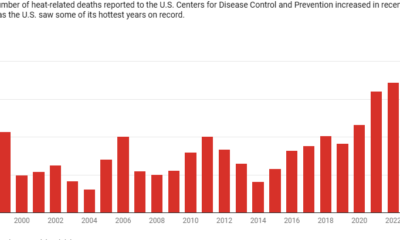cct-tracking
Surge in ‘Walking Pneumonia’ Cases: Essential Info You Need to Know

Health officials in the United States report a significant uptick in pneumonia cases among young children, attributed to bacterial infections. The Centers for Disease Control and Prevention (CDC) indicates this increase began in late spring and reached its peak around late August.
The primary culprit is identified as the Mycoplasma pneumoniae bacteria, which has been linked to climbing diagnoses of pneumonia and acute bronchitis. This particular pathogen can inflict damage on the respiratory tract, affecting critical areas such as the throat, windpipe, and lungs.
Data from the CDC reveals a substantial rise in cases among children aged 2 to 4, soaring from 1% to 7.2%. Historically, Mycoplasma pneumoniae has not been recognized as a significant cause of pneumonia in this demographic, highlighting a concerning trend. Additionally, positivity rates among children aged 5 to 17 have also doubled since the onset of the outbreak.
Parents should be vigilant, as common symptoms include fever, a worsening cough, and sore throat. Young children may exhibit unusual signs such as diarrhea, wheezing, or vomiting, prompting caregivers to seek medical guidance if symptoms escalate.
The CDC emphasizes that while Mycoplasma infections can affect individuals of any age, they predominantly impact children and young adults. Those suffering from severe symptoms like wheezing or difficulty breathing are advised to contact their healthcare provider promptly.
Even in cases termed “walking pneumonia,” where individuals may not feel severely ill, the infection should not be dismissed. The bacteria spread similarly to other respiratory illnesses, primarily through droplets from coughs or sneezes. Health experts recommend thorough handwashing and proper etiquette when sneezing or coughing as key preventive measures.


















